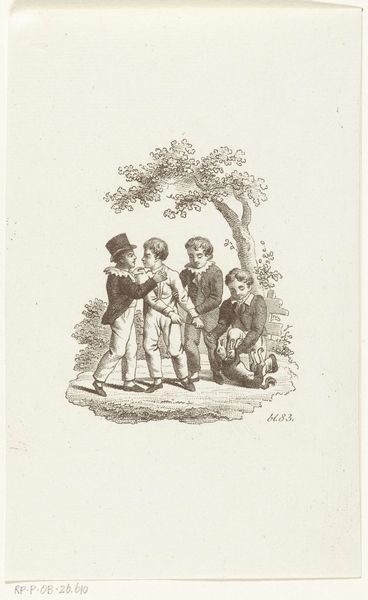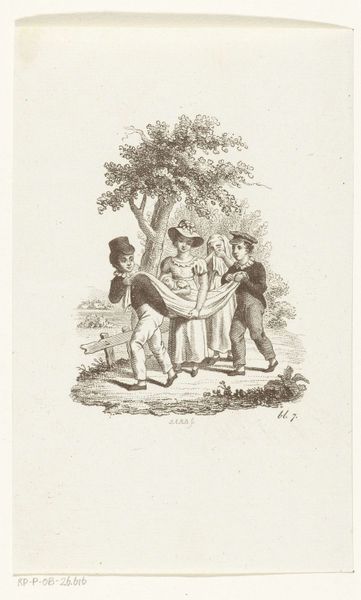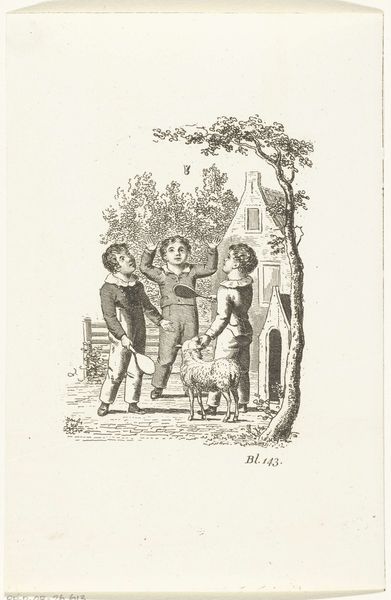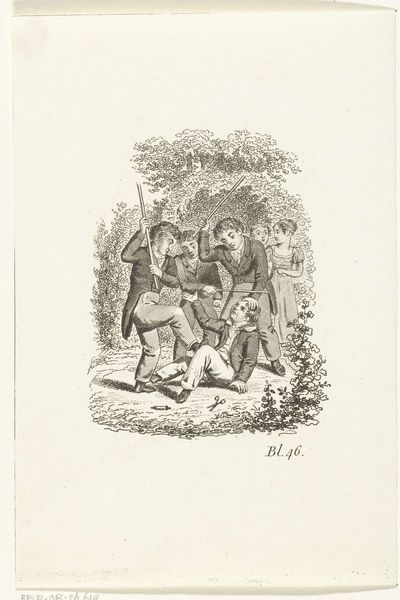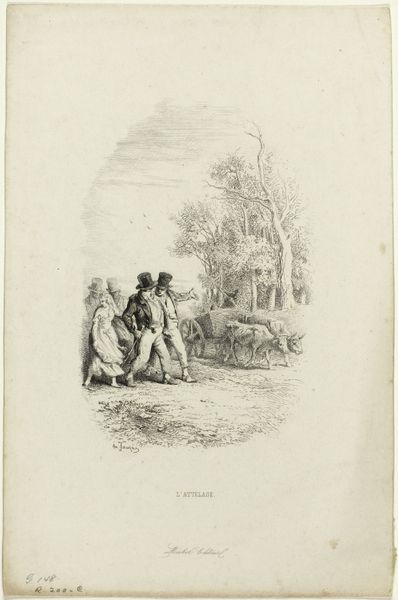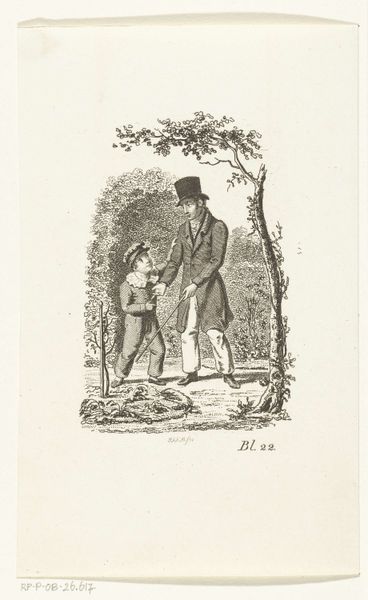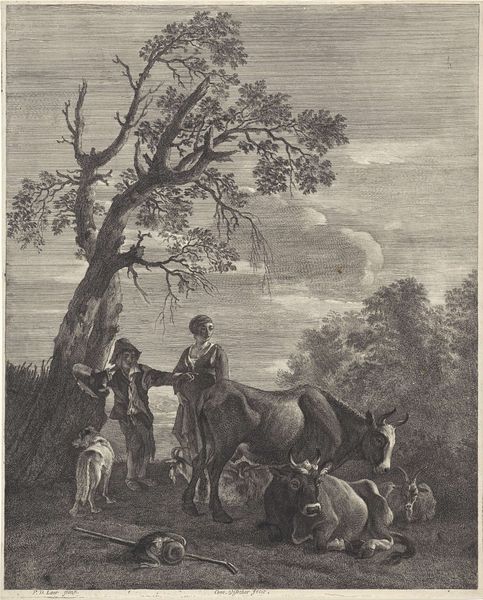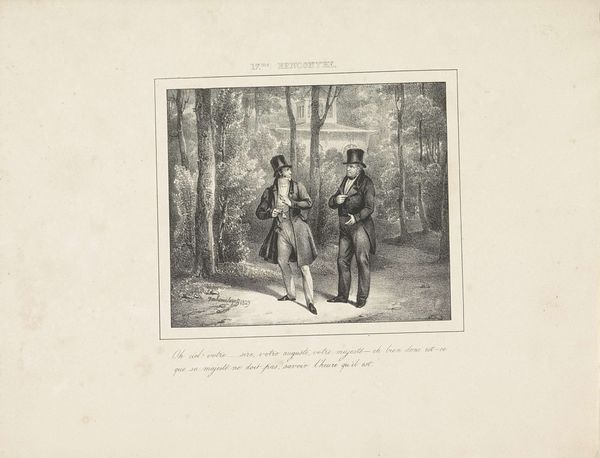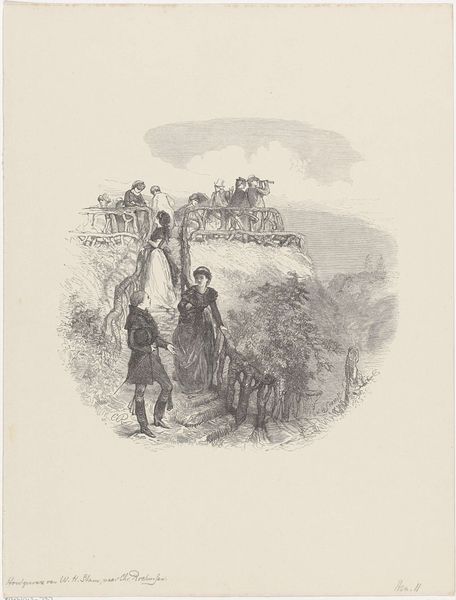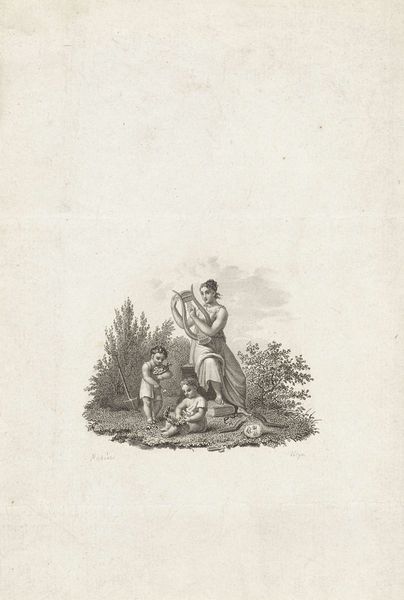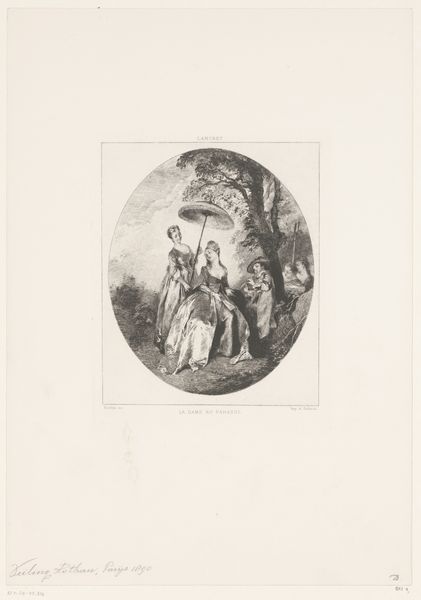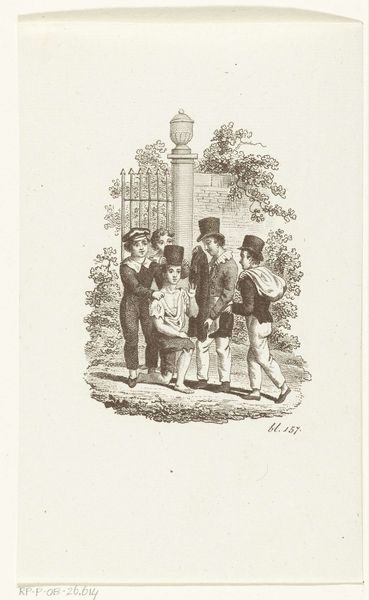
drawing, print, etching
#
drawing
# print
#
etching
#
old engraving style
#
etching
#
figuration
#
genre-painting
#
history-painting
Dimensions: height 183 mm, width 114 mm
Copyright: Rijks Museum: Open Domain
Curator: What strikes me most about "Vier jongens met kruiwagen," or "Four Boys with a Wheelbarrow," an etching dating from the first half of the 19th century by Johannes Alexander Rudolf Best, is its incredibly detailed style. The artist's craftsmanship gives it such charm, doesn't it? Editor: Yes, there's an undeniably appealing sense of innocence, even idyllic life in its visual presentation. The monochromatic rendering enhances its nostalgic and almost ethereal appeal. I’m drawn to how the group is clustered. Curator: These were times where history and genre paintings aimed to glorify the common life, finding virtue in everyday experiences and dignifying childhood... But looking closer, this isn't merely documentation; it's idealization. Best presents a carefully crafted vision of youth and brotherhood set in a scene in nature. The choice of an etching adds another layer, hinting at both accessibility via mass reproduction and artistic skill in crafting the minute details. Editor: Do you mean how this kind of image works, not only at a personal, family level but it contributes to the era’s idea of building national identity by cultivating a sort of collective memory? It is as if etching itself lends the piece an element of accessibility... It mirrors society in many aspects... And while "genre" pieces frequently depicted more marginalized peoples, this feels safely within certain social parameters, like a visual prescription for building upright young men. Curator: Absolutely. The very act of distributing this image probably created new cultural norms. Editor: Ultimately, Best offers a vision not just of youth, but the promise inherent in societal institutions and roles... A social structure expressed visually with subtle nuance! The charm lies perhaps in witnessing society shaping even playful experiences into the seeds of what's yet to bloom. Curator: I feel its power is showing that we can find meaning even in apparently small and humble pieces such as this etching; perhaps its impact goes deeper than merely meets the eye. Editor: Precisely! This makes a compelling observation about our relationship with both artwork and broader society – showing how aesthetics serve not only our pleasure, but as agents in shaping shared consciousness across time.
Comments
No comments
Be the first to comment and join the conversation on the ultimate creative platform.
